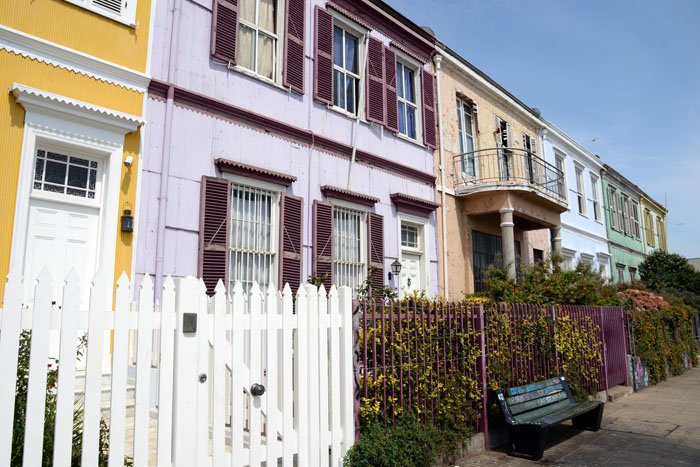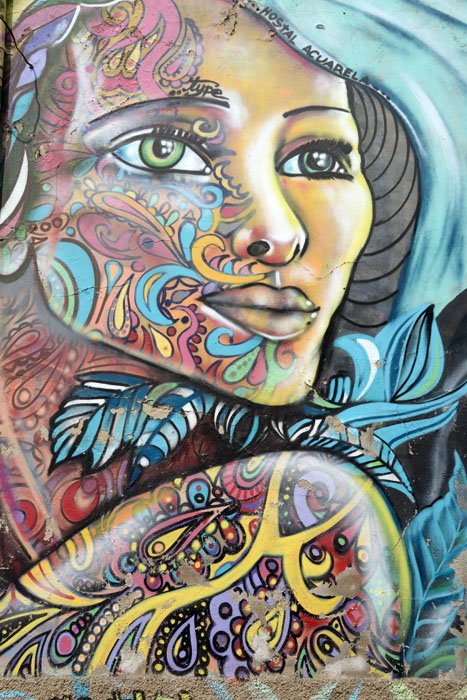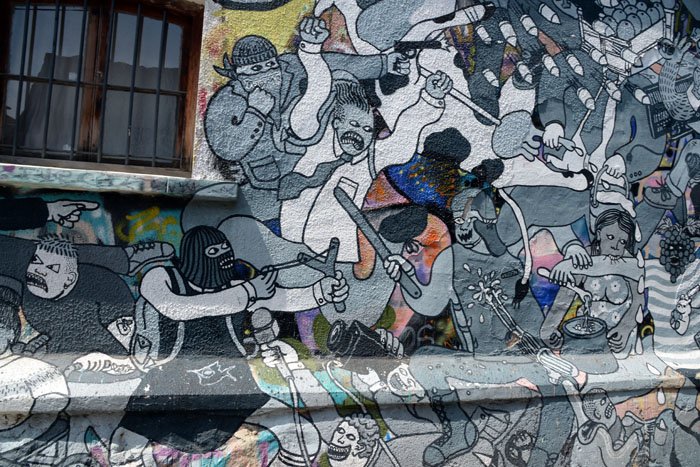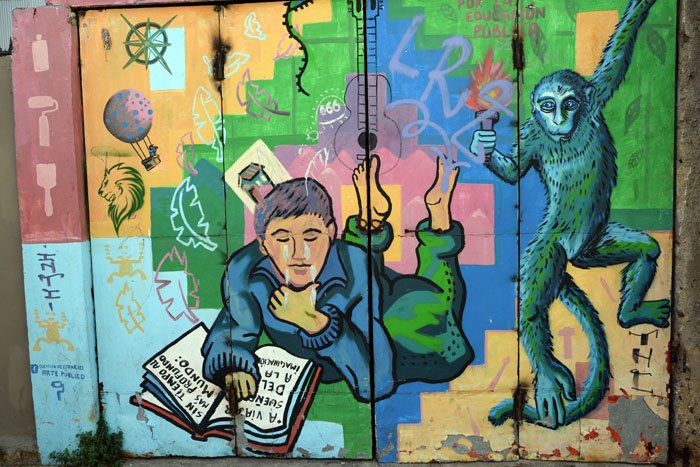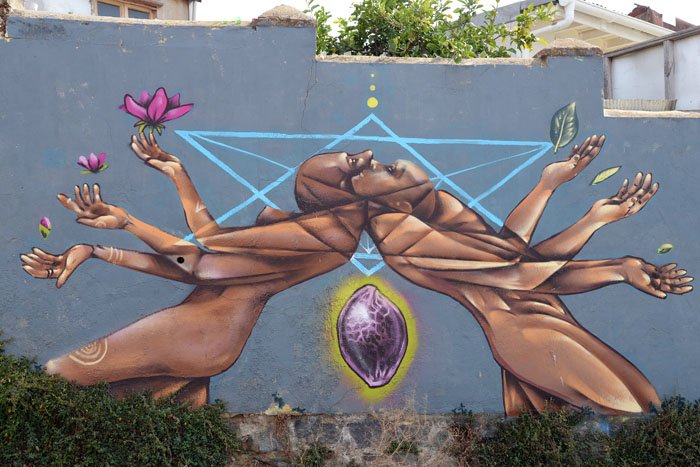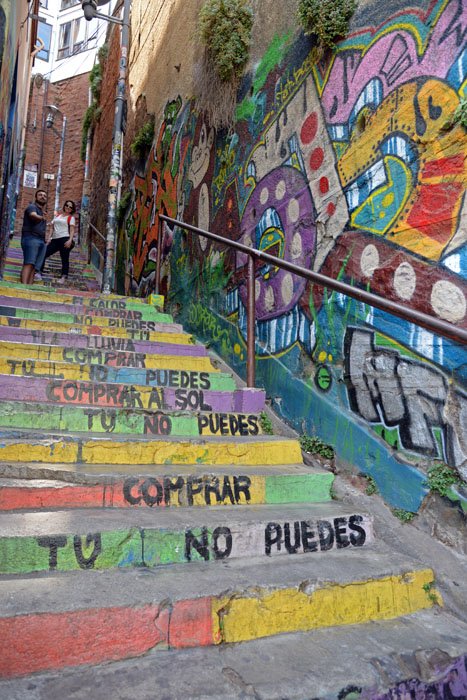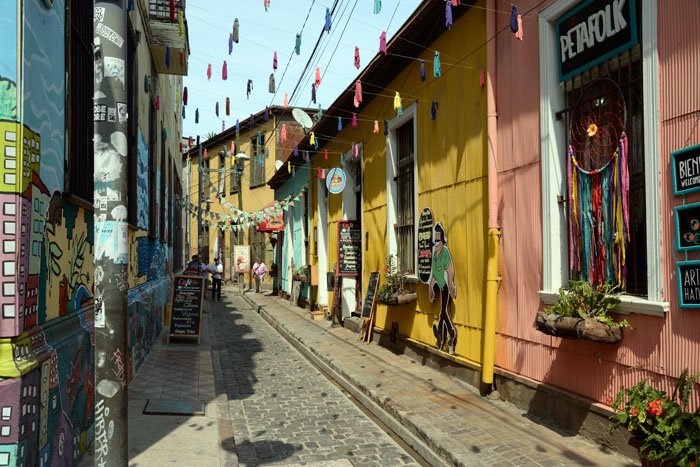
Valparaiso is one of the most colorful cities I have seen. Street art seems to be everywhere. On every house and in every street. The city has a well preserved historic quarter. The city was populated by people from all over the world, which is reflected in the different architectural styles. It is also a city with an amazing amount of street art. Not only done on walls, but on doors, stairs and benches. I did a half day guided walking tour up and downhill in the areas of Allegra and Consepcion. In just a few hours we learned a lot about this historic city and story of street art.
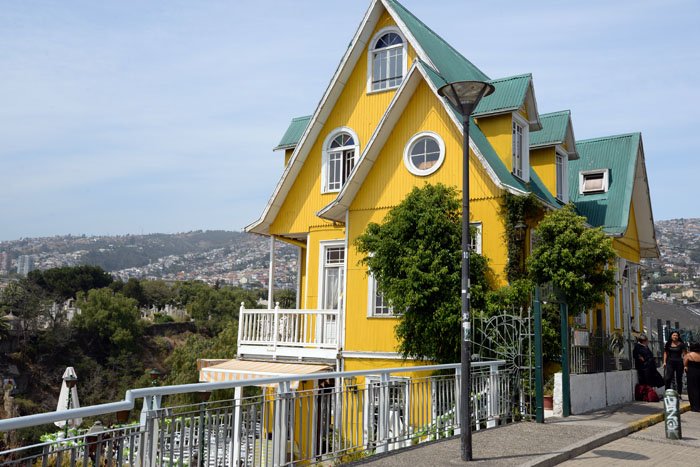

The city of Valparaiso is located on Chiles Pacific coast. The city is situated on hills and has several «elevators» or funiculars were built between 1883 and 1916 and are still operating. There are so many examples of architecture from this era. The two «hills», Alegre and Consepcion were mainly developed by English and German immigrants. Going through the Paso Jogoslava ( Jugoslavian passage) gives a good impression of the the masions and architecture from the 19th century. Squares, viewing points, promenades, alleyways and stairway and the funicuars to bring people up and down. You can easily see which area you are in by looking at the buildings.
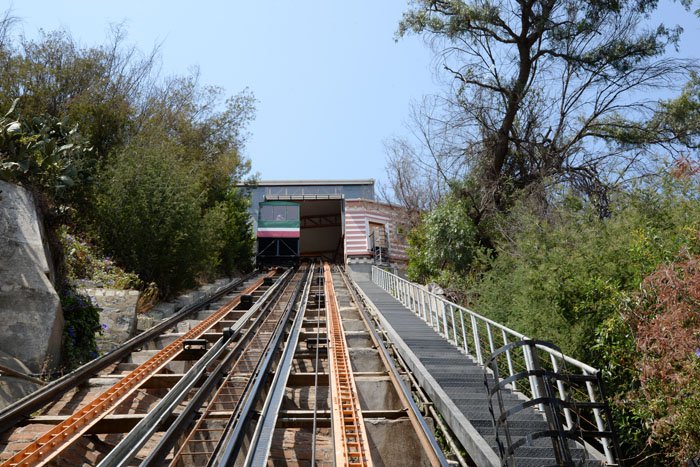
The historic quarter is a result of the role Valparaiso played as a port. In the 19th century it was a major port, connecting the Atlantic and the Pacific. The city became a stop over for boats taking gold and other goods to Spain. At that time ships came around Cape Horn. The city experienced economic decline in the 20th century. In addition the earthquake in 1906 destroyed most of the buildings. When the Panama canal opened it also had an effect. According to the guide, Valporaiso had Chile's first public library. Now the historic quarter is a UNESCO World Heritage site.
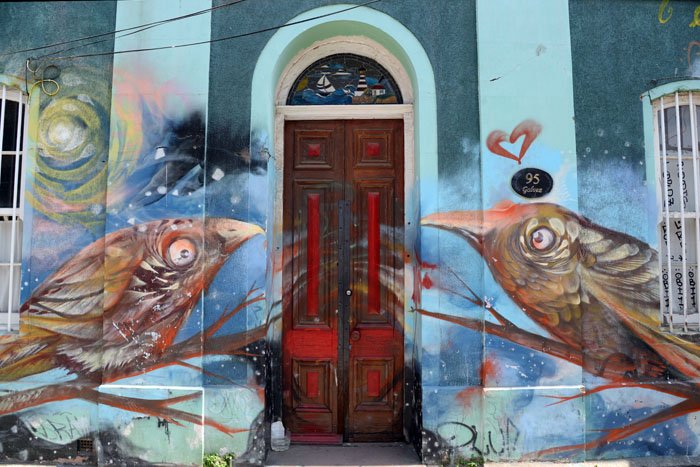
Graffiti and street art are both part of the identity of the city. It is a way of communicating something. It is ranging from simple tagging to large murals. The graffiti scene started as a silent protest against the regime of Augusto Pinochet in the 70s. During his rule artistic expression was repressed. But when the dictatorship ended, the government decided to make it legal. I wonder if they knew the effect of there decision!
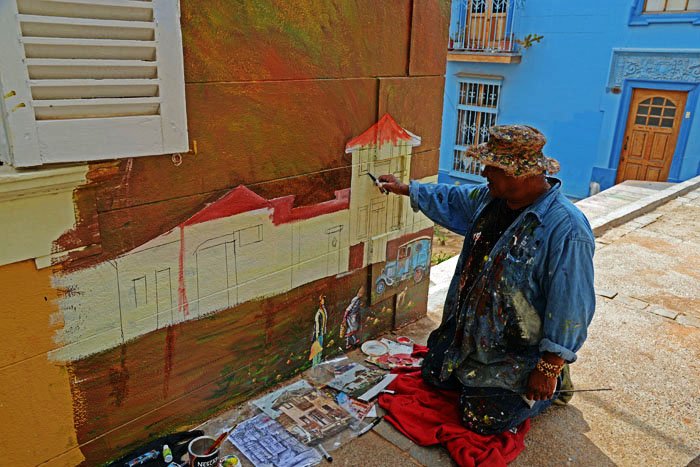
Street art is used to express both political and social opinions. Our guide did explain the meaning behind some of the murals. Like the one above is about the educational system. Education is not free, which does not benefit poor families. The monkey represents the state (according to our guide)

I you want to know something about the artists, the meaning behind a mural, the city and the architecture, I recommend a walking tour with a guide. The benefits of a guided tour is the information that gives a deeper understanding. Street art is not hard to find, It is everywhere. Just walk out in the streets and you won't miss it! In fact, you will find it more difficult to find some spots without paintings! A creative city with an amazing art scene.
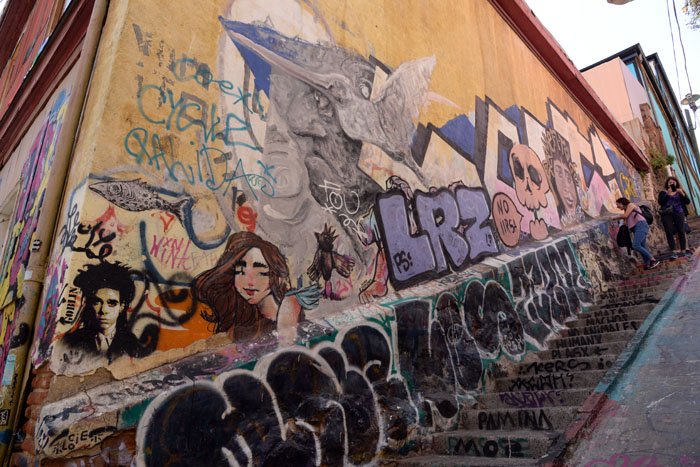
For more street art from Valparaiso:
STREET ART #23 - The colorful city of Valparaiso, Chile
Next stop: Ushuaia, Argentina
Please do follow if you want to keep up with my next travel story. Any upvotes or resteems are hugely appreciated!
Latest travel stories, check out :
CHILE #5 - On a hot date with Mother Earth
CHILE #4 - Into the mysteries of Easter Island
ARGENTINA #3 - Patagonias colossal field of ice and snow
ARGENTINA #2 - highligst of Patagonia: Mt. Fitz Roy
ARGENTINA #1 - walking through the «City of the Dead» in Buenos Aires
U.J
Kristiansand, Norway
All the photoes are mine, Ulla Jensen (flickr, Instagram and facebook)
[//]:# (!steemitworldmap -33.047905 lat -71.612632 long CHILE #6 – The city of street art d3scr)
